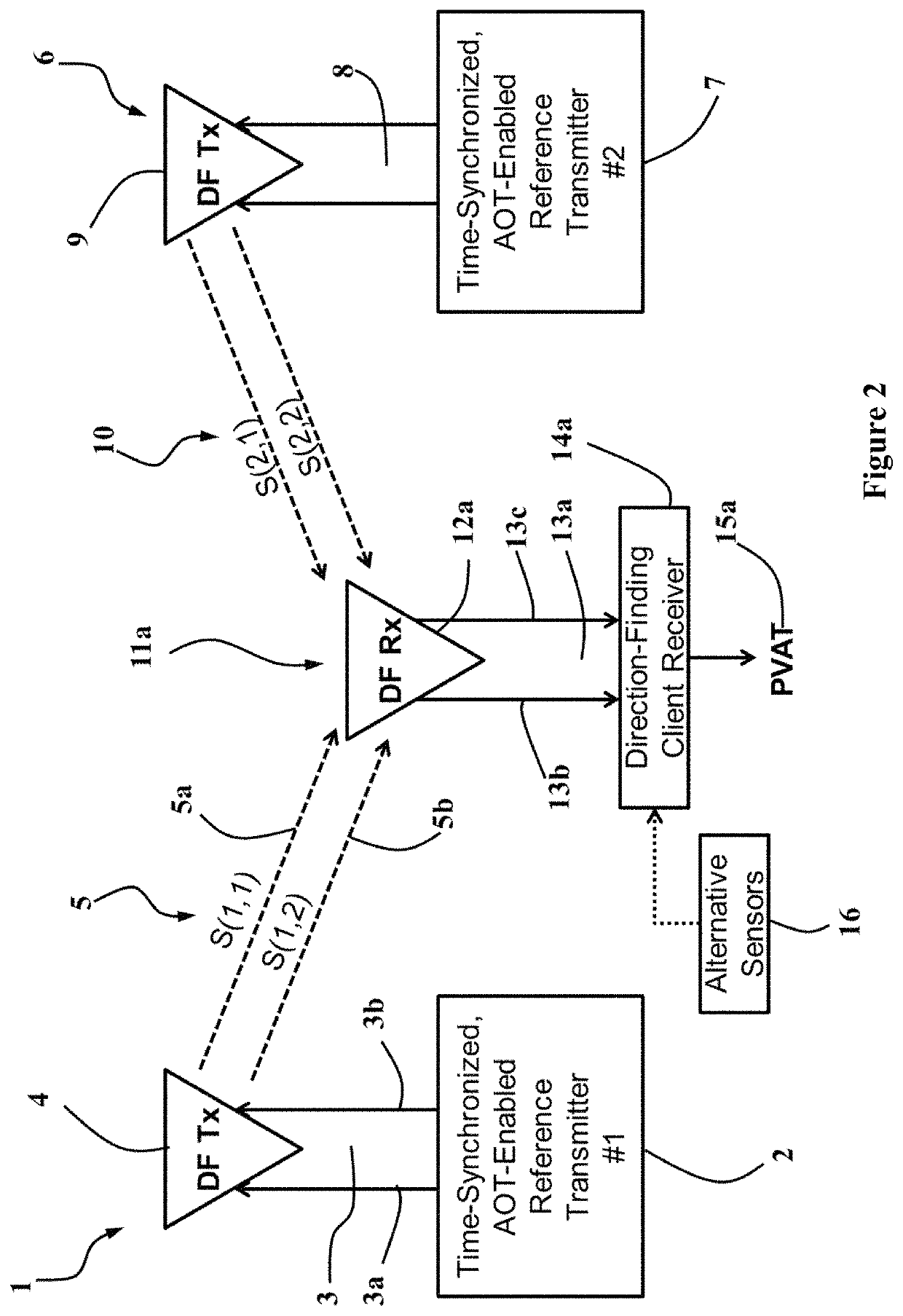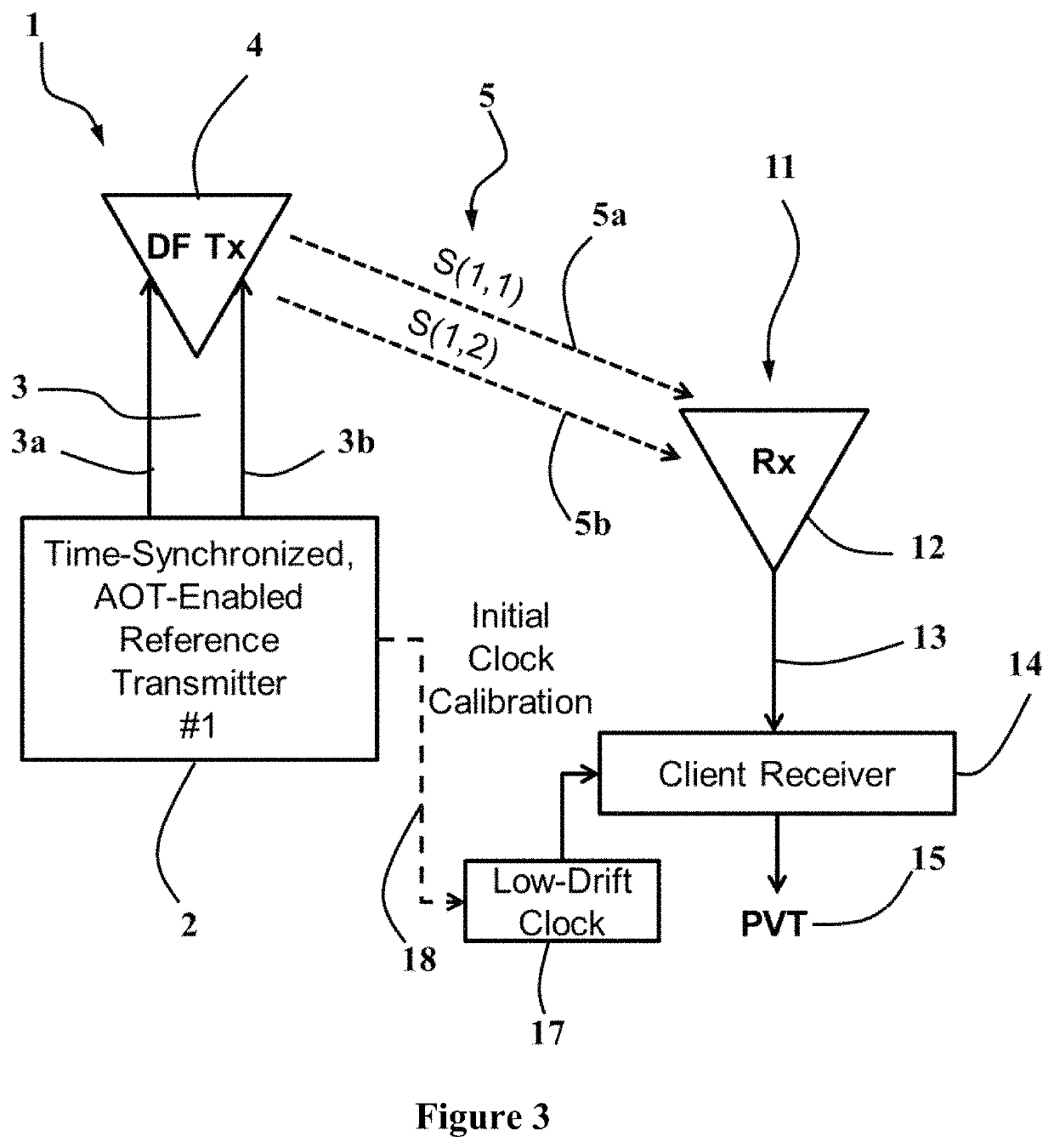System for positioning, navigation, and time (PNT)
a positioning system and positioning technology, applied in direction/deviation determination systems, direction/deviation determining electromagnetic systems, instruments, etc., can solve the problems of not being able to simultaneously lock-on to four direct-path gnss signals in urban environments or environments with large sky obstructions, and need a minimum of four satellite/pseudolite signals, etc., to achieve high-efficiency positioning and positioning, improve the accuracy of positioning, and improve the effect of receiver performan
- Summary
- Abstract
- Description
- Claims
- Application Information
AI Technical Summary
Benefits of technology
Problems solved by technology
Method used
Image
Examples
Embodiment Construction
[0091]Referring now to the drawings, which are intended to illustrate presently preferred exemplary embodiments of the invention only and not for the purpose of limiting same, the navigation reference system concept is shown in FIG. 1. The main component of the present exemplary embodiment is a reference station 1, which consists of an angle-of-transmission-enabled electronics package 2 that generates at least two uniquely identifiable (PRN codes) and time-synchronized waveforms that are output to a feed network 3 having at least two feeds 3a, 3b.
[0092]The feeds 3a, 3b, are connected to a direction-finding (DF) transmit (Tx) antenna 4 supporting at least two DF modes or at least two elements. The emissions 5 of the DF antenna include the uniquely identifiable and time synchronized waveforms S(1,1) 5a and S(1,2) 5b, where S(i,j) refers to the jth waveform (of M) of the ith reference station (of N). Each reference waveform must be unique and differentiable from the other waveforms. H...
PUM
 Login to View More
Login to View More Abstract
Description
Claims
Application Information
 Login to View More
Login to View More - R&D
- Intellectual Property
- Life Sciences
- Materials
- Tech Scout
- Unparalleled Data Quality
- Higher Quality Content
- 60% Fewer Hallucinations
Browse by: Latest US Patents, China's latest patents, Technical Efficacy Thesaurus, Application Domain, Technology Topic, Popular Technical Reports.
© 2025 PatSnap. All rights reserved.Legal|Privacy policy|Modern Slavery Act Transparency Statement|Sitemap|About US| Contact US: help@patsnap.com



